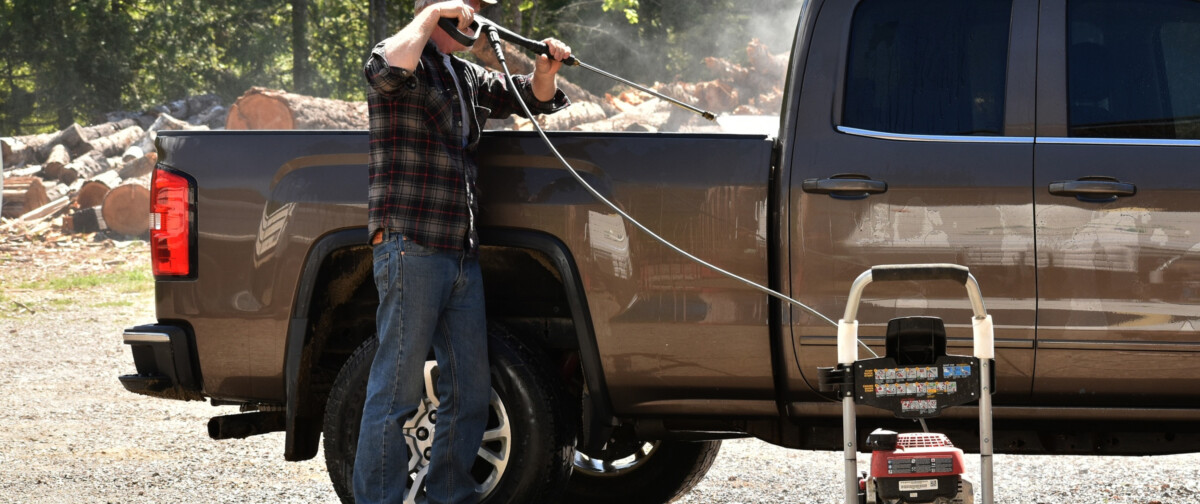
11 Tips and Tricks to Improve Your DIY Pressure Washing
You’ve come into possession of a pressure washer—and with it, endless potential for cleaning those surfaces that have been gathering dirt for decades.
Our guess is that you’re about to discover a new hobby and that your home and possessions are about to get a whole lot cleaner.
But before you start spraying everything in sight, it’s probably a good idea to know what you’re doing. Do a quick read through these tips so you can use your pressure washer quickly, effectively, and safely.
1. Follow recommended safety procedures
All those procedures might seem bothersome and extreme, but pressure washing is no joke.
The US Consumer Product Safety Commission estimates that over 7,000 people in 2022 were treated in emergency departments for injuries related to pressure washers.
We don’t want you contributing to one of those statistics, so here are some safety guidelines you can follow when you’re using your pressure washer.
Make sure that other people and pets aren’t nearby when you’re operating a pressure washer
They can easily be injured if hit by the spray.

Wear PPE
This includes
- Eye and ear protection
- Long shirt and pants
- Sturdy shoes with rubber soles
- Gloves (especially if working with chemicals)
Operate gas-powered pressure washers only in well-ventilated areas
You don’t want carbon monoxide building up.
Be careful what you wash
Not every surface is suitable for pressure washing, but some can be downright dangerous.
For instance, you can use a pressure washer to strip away paint. However, lead-based paints weren’t banned for residential use in the US until 1978. Depending on how old that paint is that you’re blasting away, you could be exposing yourself and others to dangerous lead particles.
As an additional example, maybe you’re tempted to clean your house’s windows with a pressure washer. However, it’s far too easy to break them with the force a pressure washer produces.
These are just a couple of examples, but they highlight the importance of knowing about the surface you’re cleaning. You don’t want to put yourself and others at risk or damage the surfaces you’re trying to clean.
Cover vulnerable surfaces
Survey your surroundings before turning on your pressure washer and identify those items—plants, shrub beds, windows, etc.—that you don’t want to get sprayed with water or detergent. Cover them securely.
Angi.com also recommends watering nearby plants before, during, and after a pressure washing session to help dilute any cleaning agents that land on them.
Be careful with chemicals

While you can clean a lot with just water from your pressure washer, you may find that some jobs are a little more demanding.
Your safest bet is to use pre-made chemical mixes if you need to incorporate extra cleaning agents. This isn’t the time to play scientist.
For example, bleach? Really helpful for cleaning. Vinegar? Also helpful. Mix them together, though, and you don’t get double the cleaning power. Instead, you’ll create toxic chlorine gas.
Of course, you’ll also want to follow the directions and safety precautions associated with the specific cleaner you’re using.
Check out more pressure washer safety information from the CDC.
2. Get familiar with common pressure washer terms
Pressure washers have a jargon all of their own. Knowing some of these terms will help you make sense of this and other pressure washing resources.
- ECU (effective cleaning units): the GPM of your machine multiplied by the PSI; it acts as a measurement of your pressure washer’s overall power.
- GPM (gallons per minute): the volume of water going through your pressure washer’s pump in one minute; this number stays relatively constant.
- PSI (pounds per square inch): the force of the water leaving your washer’s nozzle; this number can vary based on several factors.
- PW (pressure washer): that piece of cleaning equipment you’re trying to learn how to use.
- SH (sodium hypochlorite): a bleach cleaning solution that can be used in a pressure washer.
- Downstream injector: a system that adds detergent to your pressure washer’s flow after the water has passed through the pump.
- Power washer: it’s sometimes used interchangeably with pressure washer, but power washers can use heated water—a key difference.
- Soft washing: using detergent and a low PSI setting to wash exterior surfaces gently.
- Turbo nozzle: a nozzle that sprays a very concentrated stream of water in a circular motion that provides extra cleaning power.
- Unloader: a component of your pressure washer that helps to redirect water flow if too much pressure is building. It can also be adjusted to change the PSI your washer produces.
By the way, if you’re curious to learn more about GPM, PSI, and ECU, the blog below can help you out.

Looking to buy a pressure washer? Learn about pressure washer features and considerations so you can get the one that’s right for you.
Read the blog3. Know your nozzles
The great thing about pressure washers is that they’re versatile—as long as you’re using the right tools. For example, by swapping out spray tips, you can use your pressure washer on a greater variety of surfaces.
Spray tips are categorized by colors that indicate the width of the spray in degrees. The smaller the degree, the more concentrated (and powerful) the spray. Here’s your key to knowing what’s what:
- Red: 0⁰
- Yellow: 15⁰
- Green: 25⁰
- White: 40⁰
- Black: low-pressure/soap spray
You’ll notice that the red tip has an extremely concentrated spray. This means you should exercise extra caution when using it.
In addition to using a spray tip with the right width, you’ll want to make sure that the nozzle orifice size is the correct one for your pressure washer. Recommendations for the appropriate size are based on your unit’s GPM and PSI.
4. Use the right fuel
If you have a gas-powered pressure washer, then you gotta put gas in it. Unsurprising but true.
What might be more surprising is that you can damage your pressure washer by using the wrong type of gas.
Fuel that contains more than 10% ethanol shouldn’t be used in small engines—like those in pressure washers. So be sure to double-check that gasoline before filling up the tank.
5. Stockpile extra spray tips for your pressure washer
Seriously. Have backups. And backups for your backups.
You’ll thank us when your washer loses pressure and you can just switch out the tip and keep going with your job.
Now, if that trick doesn’t work, then it’s time for some more in-depth troubleshooting. Fortunately, we have you covered with this blog on pressure washer troubleshooting and this one specific to pressure washer pump issues.

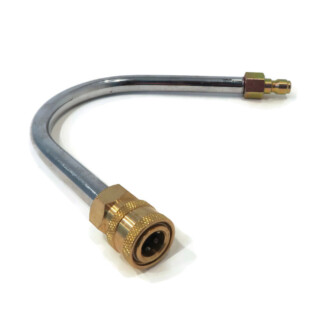
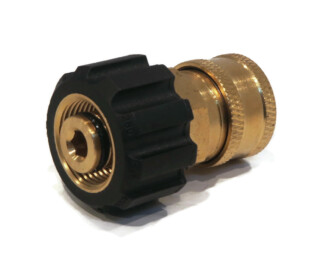

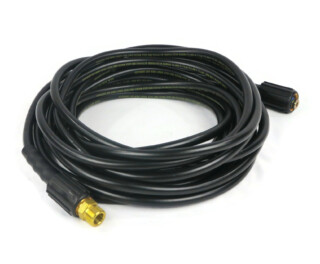
6. Ensure adequate water supply
Do you know how much water your home’s spigots can produce? If you’re not sure and hook up your washer anyway, you could wind up damaging your machine.
To test the output of your water source, put a bucket with a known capacity under your water spout and time how long it takes to fill. Make sure that the output in one minute is equal to or greater than your pressure washer’s GPM.
7. Pre-clean surfaces
“Doesn’t that defeat the purpose?” you’re probably asking. But hear us out.
Let’s say it’s been a good while since you’ve cleaned your patio. As a result, there’s a ton of loose debris around—small sticks, fallen leaves, dirt from who-knows-where.
Taking a little time to sweep all that out will speed things up when it’s time to bring in the heavy equipment, and you’ll be able to focus on cleaning the deeply embedded dirt that’s just begging to be pressure washed out of there.
8. Keep the water moving
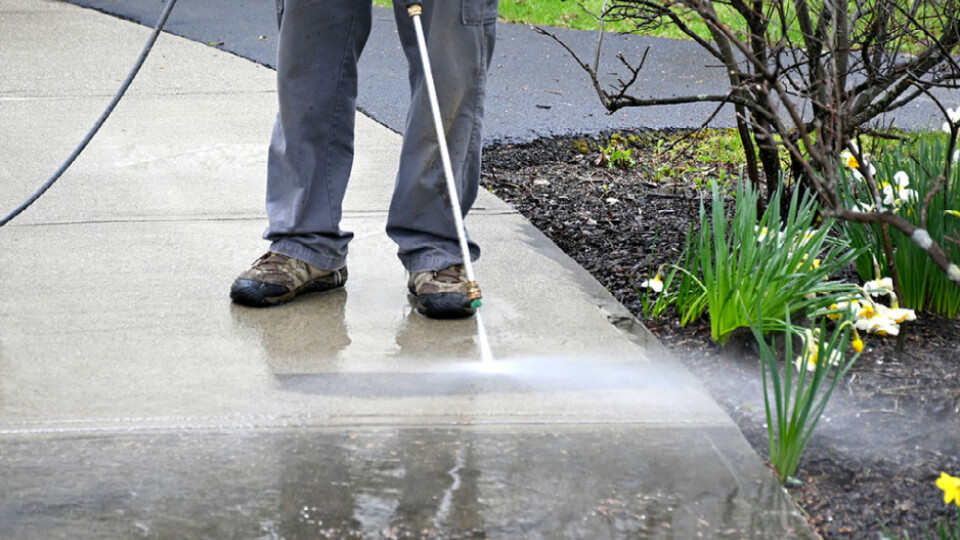
Your pressure washer’s pump is kept cool by the water that flows through it. Pretty ingenious, right?
The problem comes when you’re no longer pulling the spray trigger. That cooling action stops, which can lead to your pump overheating.
This doesn’t mean that you must constantly pull the trigger whenever your unit is on. But if you absolutely have to pause while your pressure washer is running, definitely continue giving the trigger a squeeze every minute or so.
9. Keep the water cold
Closely related to our last point is the idea of only using cold water in your pressure washer.
Some units can use hot water—they’re called power washers—and in those cases, go for it.
But when in doubt, stick to cold water. This means making sure the warm water spigots are turned off, water stays flowing through your pump, and that any water that’s been sitting in your garden hose getting warmed by the sun has been flushed out before connecting your pressure washer.
10. Do test patches
There are lots of surfaces you can use your pressure washer on—vehicles, siding, driveways, and more.
But not every surface is okay to pressure wash, and even for those that are, you’ll need to make sure you’re using the right spray tip so you don’t cause damage.
If you’re unsure about a surface, test your washer in an inconspicuous area (and spray from a distance) before going all in. Start with a gentle setting and only increase the pressure if you really need it.
11. Perfect your pressure washing technique
Once you turn your pressure washer on and pull the spray trigger, you might discover that there’s a bit of a learning curve to using this powerful machinery.
Fortunately, we’ve rounded up a few key tips to keep in mind to help that learning curve be a bit less steep:
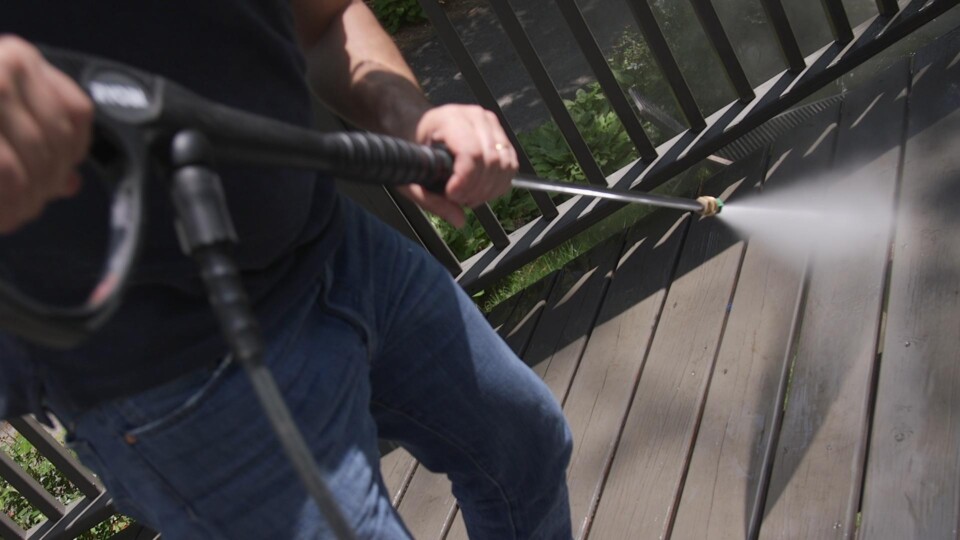
- Use overlapping passes to avoid leaving streaks and lines.
- Keep your spray at an angle so that you’re not driving water directly into the surface and pushing dirt deeper instead of washing it out.
- Apply detergent from the bottom and work your way up, but rinse from the top downwards.
- Don’t continue spraying in one spot for too long; doing so could damage the surface you’re cleaning.
Conclusion
With these tips for pressure washing under your belt, you’re ready to get out there and start using your machine to clean everything in sight.
Well, not everything. We did say that not every surface can be pressure washed, after all. But you get the idea.
If you run into problems with your pressure washer, The ROP Shop’s got your back. We have a variety of helpful resources for pressure washers, like our Rugged U videos and blogs. Plus, we offer a wide selection of replacement pressure washer parts and accessories that you can check out.

Having trouble using your ROP Shop pressure washer surface cleaner? These tips can help you out.

Thinking about getting a pressure washer? Here are eight advantages to owning a pressure washer to help convince you.

Installing a new pressure washer pump doesn’t have to be a hassle. Let The ROP Shop walk you through it.

Don’t just throw your snowmobile into the shed when winter is over. Learn how to summerize it to prolong its life.